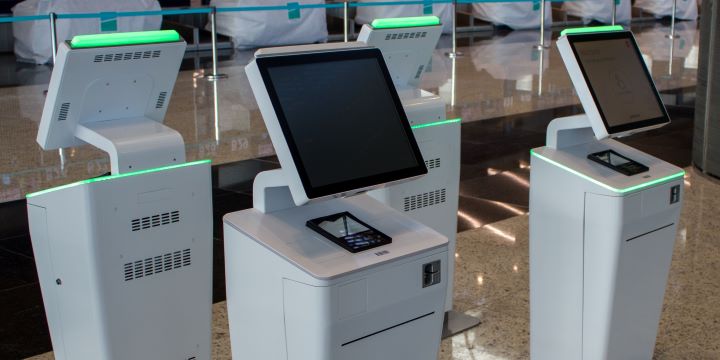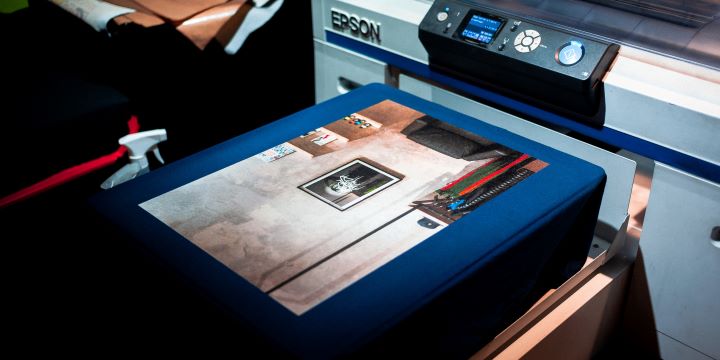How Self-Storage Kiosks Are Shaping the Industry

The digital era has transformed how consumers use and interact with services across multiple industries, with self-service technology becoming a beacon of innovation and convenience. Specifically, the self-storage sector has embraced this shift towards autonomy with open arms as self-storage kiosks continue to alter the landscape of self-service offerings. These modern solutions bring a new level of efficiency and user engagement, responding to the growing consumer preference for self-led service experiences.
Key Takeaways:
- Self-service kiosks bridge the gap between digital advancement and improved customer experiences within the self-storage industry.
- Innovations like the Internet of Things (IoT) and Artificial Intelligence (AI) are key drivers behind the enhanced capabilities of self-storage kiosks, optimizing business operations and security features.
- The forward momentum of self-service technology foreshadows a prominent future in intelligent storage solutions and market adaptability.
Table of Contents
- Introduction to Self-Service Kiosks
- The Rise of Self-Storage Kiosks
- Benefits for Self-Storage Operators
- User Experience and Accessibility
- Integrating Advanced Technologies
- Improving Security and Compliance
Introduction to Self-Service Kiosks
Self-service kiosks, defined as standalone devices that facilitate automated service transactions, have permeated various sectors due to their ease of use and time-saving attributes. Such interactive technology has seen rapid growth, particularly in industries prioritizing customer independence and efficiency. The kiosks we interact with today, from airport check-in terminals to order stations in quick-service restaurants, are evidence of the profound influence of self-service technology on societal norms and business operations.
Adapting to new consumer preferences, these kiosks deliver speed, autonomy, and convenience that align with today’s fast-paced lifestyle. They invariably lead to enhanced customer journeys by mitigating long queues and wait times, thus allowing users to manage their transactions on-demand. Insights from market research indicate that businesses implementing self-service solutions often observe an uptick in customer service metrics, such as satisfaction and retention rates. This testament to their efficacy underscores why industries are increasingly pivoting to these automated systems.
The Rise of Self-Storage Kiosks
Growing urbanization and the accompanying need for efficient space management have propelled the self-storage industry into adopting self-storage kiosk technology. As consumer demand for accessible, around-the-clock service continues to escalate, self-storage businesses are increasingly turning to kiosks to meet these expectations. These kiosks serve as a convenience and a critical extension of the company, facilitating 24/7 interactions without needing constant staffing.
Statistical evidence reflects a noteworthy surge in incorporating self-service kiosks within the industry and the subsequent positive impact on business operations. By leveraging such autonomous service points, self-storage facilities have enhanced customer service and managed costs more effectively. The operational efficiency gained allows for a more streamlined experience for both the user and the operator, demonstrating the kiosks’ tangible benefits.
Benefits for Self-Storage Operators
Self-storage kiosks provide tangible operational advantages, starting with enhanced customer service. These kiosks can offer customers on-demand assistance, from initiating rentals to completing payments without human intervention. As a result, customers enjoy a more flexible and efficient service that caters to their needs at any hour. Meanwhile, operators benefit from the reduced need for full-time staffing, especially during off-peak hours, leading to decreased labor costs and potentially expanded service hours.
In addition to labor-related savings, deploying self-service kiosks increases profitability through upselling and cross-selling opportunities. Automated suggestions and offers can be programmed into the kiosk software, providing customers with options they might have yet to consider. This enhances the customer’s experience by customizing it to their needs and adds to the operator’s bottom line. Furthermore, integrating kiosks often streamlines administrative workflows, negating the potential for human error and ensuring a smoother operation overall.
User Experience and Accessibility
When it comes to self-storage kiosks, the user experience is paramount. These systems must be intuitive and straightforward, allowing quick, stress-free interactions. Designers ensure the software interface is clear and accessible, using visual cues and responsive navigation to guide users through various processes. It isn’t just about technology; it’s about creating an empathetic bridge between the machine and the human, ensuring digital interactions are as natural and comfortable as possible.
Equal access is an essential consideration in contemporary kiosk design. Kiosks in self-storage facilities must account for diverse users, including those with disabilities. Features such as text-to-speech, adjustable height screens, and braille keypads are among the advancements making kiosk technology more inclusive. When these kiosks are designed with all potential users in mind, they help to democratize access to services and reflect a commitment to comprehensive consumer care.
Integrating Advanced Technologies
Today’s self-storage kiosks are not simply transactional terminals but advanced technology hubs that have transformed how the self-storage industry operates. The incorporation of IoT allows kiosks to communicate with other devices within the facility, creating a network that ensures every component, from the gate to the individual storage unit, works harmoniously. Additionally, AI capabilities empower kiosks to offer personalized interactions, learning from users’ preferences to suggest relevant services or promotions, thereby creating a tailored customer experience.
As we delve into the future impact of innovation on kiosk functionality, it’s clear that integrating such sophisticated technology brings newfound capabilities to self-service kiosks. Modern kiosks are becoming increasingly secure and user-focused, from high-definition touchscreens that mimic the clarity of personal smartphones to innovative payment systems that facilitate a range of transaction types. The emergent trends embodied within kiosk functionalities are shaping the future landscape of interactive customer service devices.
Improving Security and Compliance
In the realm of self-service technology, maintaining the highest levels of security is non-negotiable. Modern self-storage kiosks have security features to protect customer data and the facility. Surveillance integration is a common element, providing live monitoring capabilities that serve as a deterrent and a means of evidence collection. Self-storage kiosks also employ a variety of anti-tampering mechanisms to protect their hardware and software and to ensure uninterrupted service.
Similarly, compliance with data protection and privacy laws is crucial to kiosk operation. Operators must be vigilant in adhering to regulatory frameworks such as GDPR or CCPA, requiring kiosks to be designed from the ground up to handle personal and financial information securely. By implementing rigorous standards such as end-to-end encryption and frequent security audits, self-storage businesses can assure their customers that their data is safe, fostering trust and loyalty.
Self-Service Kiosks and the Remote Management Revolution
The advent of self-service kiosks has been pivotal in managing self-storage facilities from afar. With integrated online platforms, operators can now monitor activities such as occupancy rates, financial transactions, and customer interactions—ultimately bringing about a level of oversight that was previously impossible. This evolution towards remote management highlights the dynamic capability of kiosks to serve not just as touchpoints for customers but as integral components of a sophisticated, interconnected management ecosystem.
This synergy between kiosks and mobile applications signifies a new age in facility management where operators can address issues, update pricing, or manage promotions in real time based on data-driven insights. This remote connectivity allows for a more responsive and adaptable business model capable of meeting the evolving needs of consumers and the ever-changing demands of the competitive self-storage market.












